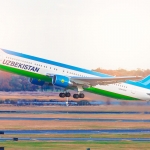07 SEPTEMBER 2019 Y.
History of Tashkent
When you go on a journey to Central Asia, you must surely visit Tashkent Uzbekistan. This city has an ancient history with numerous interesting stories, which creates a special atmosphere for everyone visiting the country.
Tashkent tourism becomes more affordable each year, offering travelers to find out what happened on the urban streets, which building is the oldest, and how people used to live there in ancient times, without spending too much on a trip. Yet, here are some things you can learn before arriving.
How It Began
The oldest urban and agrarian civilizations of Central Asia have appeared first in the watershed of the Chirchiq River. That’s exactly where the beautiful Tashkent was born. More than 2,500 years ago, this ancient settlement was a home for farmers who believed in the powerful forces of nature, personified them, and praised gods of fertility. They were also hardworking, which allowed them to master many crafts:
- production of various tools and instruments
- breeding and grazing cows, goats, horses
- working with bronze and iron
- growing cotton;
- and others.
Those people lived at Kanka, which is one of the ancient settlements. But with the time flow, the center of the Tashkent oasis shifted to the ancient settlement of Ming Urik, which is in the north. Shash-Tepa or Chach-Tepa (or “six hills” ) is how inhabitants called the city. However, the modern-day name “Tashkent” has a really long history, and now it is translated as “stone city”. Of course, it isn’t the most accurate name, but it reflects the resilience and courage of its citizens, which they showed when protecting their city from enemies.
Troublesome Middle Ages
Throughout the early medieval period, twenty castles, four cities, and many villages had been built on the lands of the modern-day Tashkent. The locals were familiar with different religious, including Manichaeism, Buddhism, and Christianity, which were brought through the Silk Road. The atmosphere of harmony, tolerance, and peaceful life was a usual part of their everyday living.
During the 20s of the 8th century, the Muslim Arab conquerors were destroying the cities and villages. The capital Ming Urik suffered most of all as it was completely ruined and devastated. Yet, it had later risen from the ashes just a few miles north-west. Its ruins are buried now under Tashkent buildings that date two centuries back.
At the Turning Point of the Eras
Due to continuous attacks, civil wars, and sieges, the city’s reconstruction slew down significantly. The cultural life and economy were developing at a slower pace too. All of those factors resulted in the 17-18th century crisis.
A chance for a new beginning of urban life appeared by the end of the 18th century. Thanks to Yunus Khoja, who ruled the city at that time, the region transformed into a semi-independent city-state. After having changed the status, it became strong enough to wage wars in order to expand its boundaries.
In 1810, Tashkent became part of the Khanate of Kokand. Later, in the middle of the 19th century, there appeared another thread – the Russian Empire was developing a strategic plan to capture the Khanate of Kokand. Obviously, Tashkent was among the main targets on the way to implementing the plan because it was one of the most blossoming centers that the neighboring countries were connected through.
The first attempt to conquer Tashkent was made on September 27, 1864, by general Chernyaev, and it ended up with failure. People showed great courage in their heroic fight for the city. However, the number of citizens was limited, so people could not fight forever. On August 17, 1866, the joining of Tashkent to the Russian Empire was announced.
Turkestan Governorate-General was proclaimed on July 11, 1867. Right after this, the process of building a new part of the city began on the channel Anchor’s left bank, where later royal officials, military officers, and numerous members of the Russian community were residing. The appointed military governor became the head of the city.
New Sides of Development
In the 70-90’s of the 19th century, Tashkent grew into a large commercial, cultural, and industrial center of Central Asia. The renewed district of the city was where the core educational and cultural institutions, new industrial facilities, and commercial enterprises were situated. The old city region, though, was neglected and, unfortunately, didn’t undergo a reconstruction.
All of the new social services and infrastructure had nothing to do with the locals – Russian peasants started arriving very soon, and they were given the best lands and property in the area. Besides, the most comfortable working conditions were created for them. By 1904, Tashkent population increased to 170,000 people, but only 40,000 of them had the luxury of living in the new neighborhood.
Both local and foreign merchants started opening groceries, clothing stores, factories, enterprises for processing raw materials, and began exporting the products. Another distinctive feature of this period in the Uzbek history was that schools as well as many other educational and religious establishments were taken under control of the royal administration, which caused unrest among people.
The Waves of Rebellion
Like in many other cities, revolts against the colonial rule occurred in Tashkent repeatedly. One of the examples is the Cholera Riot that happened in 1892. The locals rebelled against the government for their rights to get help and to burry people who died of the disease.
Changes in the History of Tashkent
- The role of Tashkent as the heart of the marvelous Uzbek culture was increasing more and more every day. Starting from the end of the 19th century, the city was a home of the emerging educational movement Jadidism (jadid meant “new”). this was the period when progressive national intelligentsia set two main goals for themselves – to bring the living standards and education of the populace to a higher degree.
- A new government was formed as a result of the coup d’état on October 28, 1917.
- During the Second World War, the Tashkent industry operated only to satisfy the war needs. Thus, by 1942, almost half of all manufacturing enterprises switched to full or partial military production. At that time, there were twenty hospitals in the city. Also, a tremendous amount of work was made to assist military families – people collected money, food, and children’s clothing. Tashkent women promoted adoption of the evacuated children so that soon there was a mass movement for that.
The Academy of Sciences of Uzbekistan operated on the Tashkent’s territory and worked on investigations in various fields, both technology and science, including nuclear physics, phytochemistry, biochemistry, seismology, electronics, and many more. The names of the Tashkent scientists are still known outside Uzbekistan.
Unlike other Soviet republics, Uzbekistan stood out for its wonderful economic opportunities and natural resources as well as hardworking and intelligent people. However, the era of stagnation appeared to be a period of severe deprivation for the entire country and for its capital in particular. Soviet repressions against people of science in the 80s affected Tashkent science a lot.
A crucial role in improving the situation has played a new head of the country, Islam Karimov, who officially started his political career in 1989. His winning of the presidential election in Tashkent in 1990 put Uzbekistan on a path to independence.
One of the Greatest Cities in Uzbekistan
The American scholar and writer Eugene Schuyler was travelling through Central Asia and visited Tashkent in 1873. And this is what he wrote about the city:
“No Asian city is as diverse as Tashkent. Its streets cross each other intricately. When you take a walk somewhere outside, they go up and down, and then suddenly you run into some wall and find yourself standing in front of a mosque or a minaret that goes up into the sky.”
There are many secrets lurking on the streets of the mysterious and charming Tashkent city, hiding between the bricks of the buildings, and buried in the sands. They are waiting for you to uncover them. Be sure the city will settle in a corner of your heart, and the atmosphere will make you want to come back there again.














